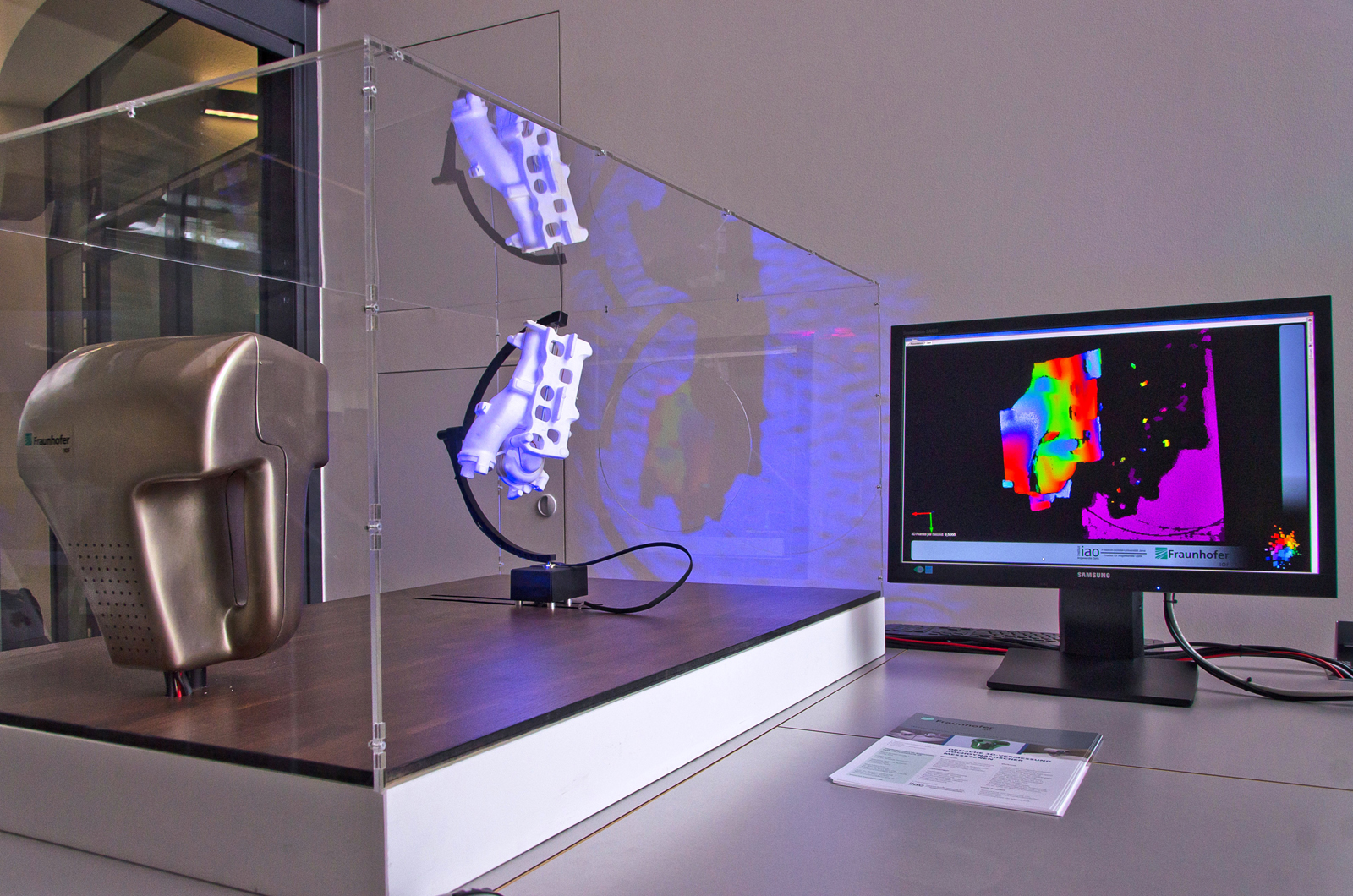Three-dimensional monitoring of high-speed fabrication
If you want to gage the quality of castings on a production line, you need high-speed systems. A new type of measurement system delivers a quick 40 images per second – and they are three-dimensional. Researchers will present the system at the “LASER World of PHOTONICS 2013” Trade Fair and Congress in Munich May 13-16, 2013 (Hall B2, Booth D18).
Capturing images of moving objects is difficult. Photographers know this as well as engineers who have to inspect industrial products on production lines. For example if there are castings transported on conveyor belts through assembly facilities that must be analyzed on the go. Does the fabrication quality of the castings meet the requirements? Are they correctly shaped? A new three-dimensional measurement process will facilitate these kinds of analyses for engineers in the future. Researchers at the Fraunhofer Institute for Applied Optics and Precision Engineering IOF in Jena jointly developed the technology with their colleagues in the neighboring Institute of Applied Optics at Friedrich Schiller University. “Our non-contact three-dimensional measurement process works so fast that we can even produce high-quality imaging of dynamic processes,” says Dr. Peter Kühmstedt, Group Leader at IOF.
400 photographic images instead of 180
Optical measurement itself is nothing new. Previously, certain kinds of images such as stripes or multiple sequences of patterns have been projected onto the object to be measured. If the object was malformed, the image was correspondingly distorted. Experts can create a three-dimensional representation of the object from about ten different images projected sequentially. If you utilize a digital video projector that creates digitized images for these projections, however, the imaging frequency is quite limited. Usually a digital video projector can project about 60 images per second; extraction of 180 2-D images per second is the maximum. This is usually sufficient for slow processes. However, this technique reaches its limits at higher speeds such as real-time quality control of components moving by on a production conveyor belt.
The new process that Fraunhofer researchers will be presenting at the LASER Trade Fair in Munich can handle these demands. “We are able to project 400 images per second with our gaging technique and create 40 three-dimensional images per second with it,” explains Kühmstedt. To achieve this goal, you only need a single photographic slide illuminated with an LED source. The resultant projection falls on a rotating mirror that directs it at right angles onto the object. The neat trick: the mirror rotates on a skewed, tilted axis - so that it always directs the identical image onto the object, but at slightly differing angles.
The scientists have already constructed a prototype that uses LED illumination. In the next phase, the researchers want to move to a laser-based model able to operate at even higher speed.
